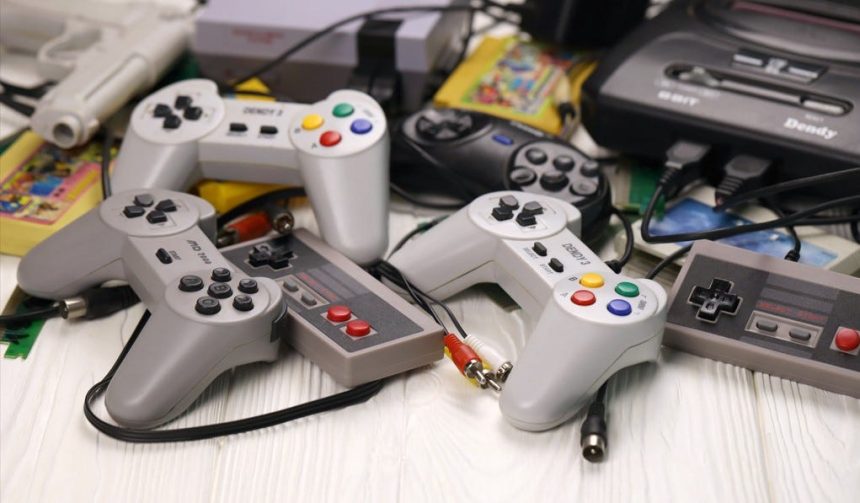If you’ve been involved in the gaming industry for more than 15 years, you’ve likely encountered declarations akin to those of the past. In the early 2000s, the narrative was the decline of PC gaming. Consoles were thriving, piracy posed challenges for publishers, and familiar titles consistently dominated sales charts. The focus shifted from PCs to consoles, particularly the PlayStation.
However, the landscape changed with the emergence of Steam and the indie gaming scene. Suddenly, predictions of the demise of PCs were no longer credible.
Around eight years ago, handheld gaming faced a similar fate. The PS Vita faltered, the Nintendo 3DS struggled to match its predecessor’s success, and mobile games took center stage globally. Handheld devices seemed to be overshadowed by smartphones, especially the iPhone.
Then came the Nintendo Switch, bridging the gap between consoles and mobile gaming. This successful product disrupted the narrative, proving that handheld gaming was far from obsolete.

The current scenario presents some differences. Data indicates a slowdown in the console market, prompting both Xbox and PlayStation to discuss their multiplatform strategies extensively.
For enthusiasts of traditional gaming consoles, it hasn’t been a favorable week. Sony announced it would fall short of its target to ship 25 million PS5 consoles by at least four million units in the fiscal year.
Despite ample availability, PS5 sales are trailing behind those of the PS4. During financial discussions, Sony’s COO and CFO, Hiroki Totoki, outlined plans to release more PS5 games on PC as part of an aggressive strategy to enhance margins.
The following day, Xbox’s highly anticipated business update confirmed that some of its games would be available on PS5. While emphasizing its commitment to hardware, Xbox reiterated that its key titles remain exclusive to Xbox and PC. Nevertheless, the company’s strategy has consistently aimed to extend beyond hardware, as evidenced by this recent move.
A closer look at install base figures reveals that the console market has stagnated over the past two decades. Despite revenue growth driven by subscriptions, DLCs, microtransactions, and digital adoption, the user base for PlayStation and Xbox hasn’t expanded significantly.
With escalating development costs squeezing profitability, these companies must either reduce game development expenses or attract more customers—or, ideally, both.

Nintendo complicates this narrative. Its consoles operate on a different timeline compared to competitors, and defining the Switch as solely a console or handheld device poses challenges. Nintendo’s focus on family-friendly first-party titles sets it apart from PlayStation and Xbox. Even regulatory bodies analyzing Microsoft’s acquisition of Activision Blizzard recognize Nintendo as distinct from its competitors.
However, perhaps this divergence is the key to revitalizing the market. Sustainable growth often requires innovation. In an engagement-driven economy, where attention is the currency, everything competes for consumers’ time—including gaming consoles.
The success of the Nintendo Switch can be attributed to its appeal to both younger and older demographics. Its innovative hardware features, such as portability and detachable controllers, coupled with iconic titles, broaden its appeal beyond traditional gamers.
Throughout gaming history, consoles have introduced novel features beyond improved visuals, such as motion controls and online services. While some innovations, like Kinect for Xbox, have failed to gain traction, they underscore the industry’s willingness to explore unique experiences exclusive to consoles.
As smartphones and PCs become more advanced and accessible, consoles must demonstrate their distinctiveness. This necessitates a reevaluation of strategies akin to the shifts witnessed in the early 2000s and handheld gaming in 2017.
The current generation of consoles, represented by the PS5 and Xbox Series, has offered incremental improvements over their predecessors. While innovations like the PS5 DualSense controller and Xbox Series S/X’s dual-console approach are noteworthy, the fundamental experience remains largely unchanged.
Both Microsoft and Sony are diversifying their strategies to attract new users and explore different markets. While this multiplatform approach may yield short-term gains and benefit players, it also underscores a lack of fresh ideas in the console market.
Nevertheless, amidst this convergence towards a standardized future, there remains hope that creators will continue to innovate and rejuvenate the gaming console, making it more compelling than ever before.







